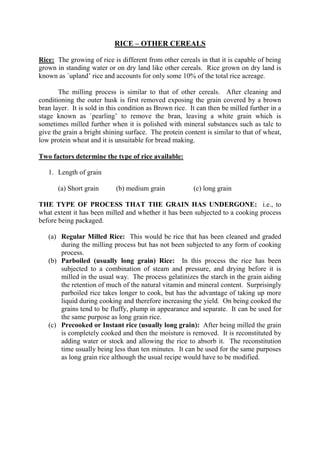Rice and other cereals like wheat, rye, barley, maize, and oats are important crops that provide flour and other products. Rice is unique in that it can be grown in flooded fields or dry land. The milling process removes the husk and bran, producing brown and white rice. Rice is classified by grain length and processing. Parboiled and precooked rice undergo steam treatment before or after milling. Byproducts include rice flour, cones, and paper. Other cereals are used to make breads, porridges, beers, and more. Pasta is typically made from durum wheat through mixing, kneading, pressing, and drying the dough. Breakfast cereals come


